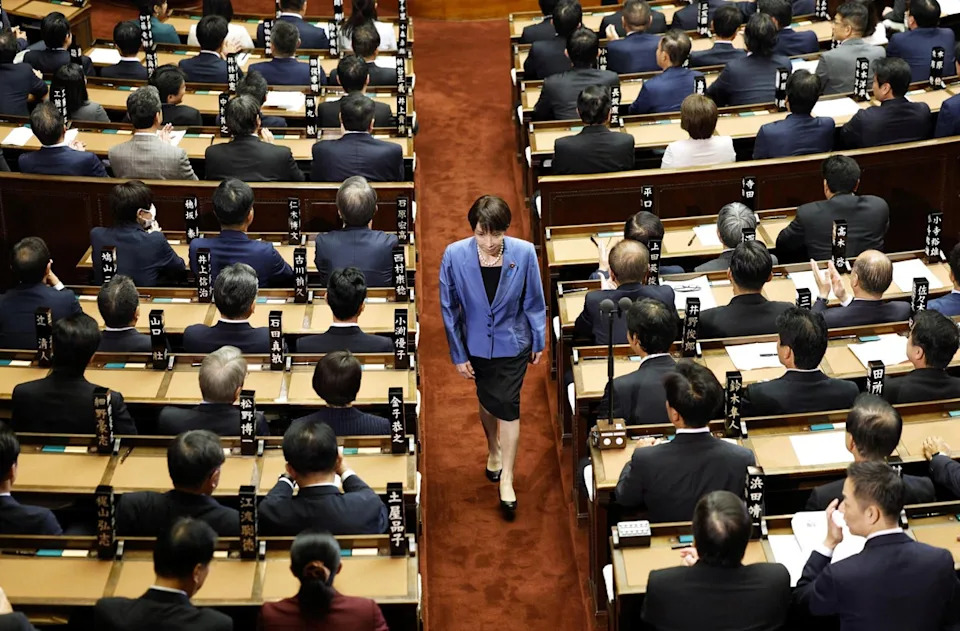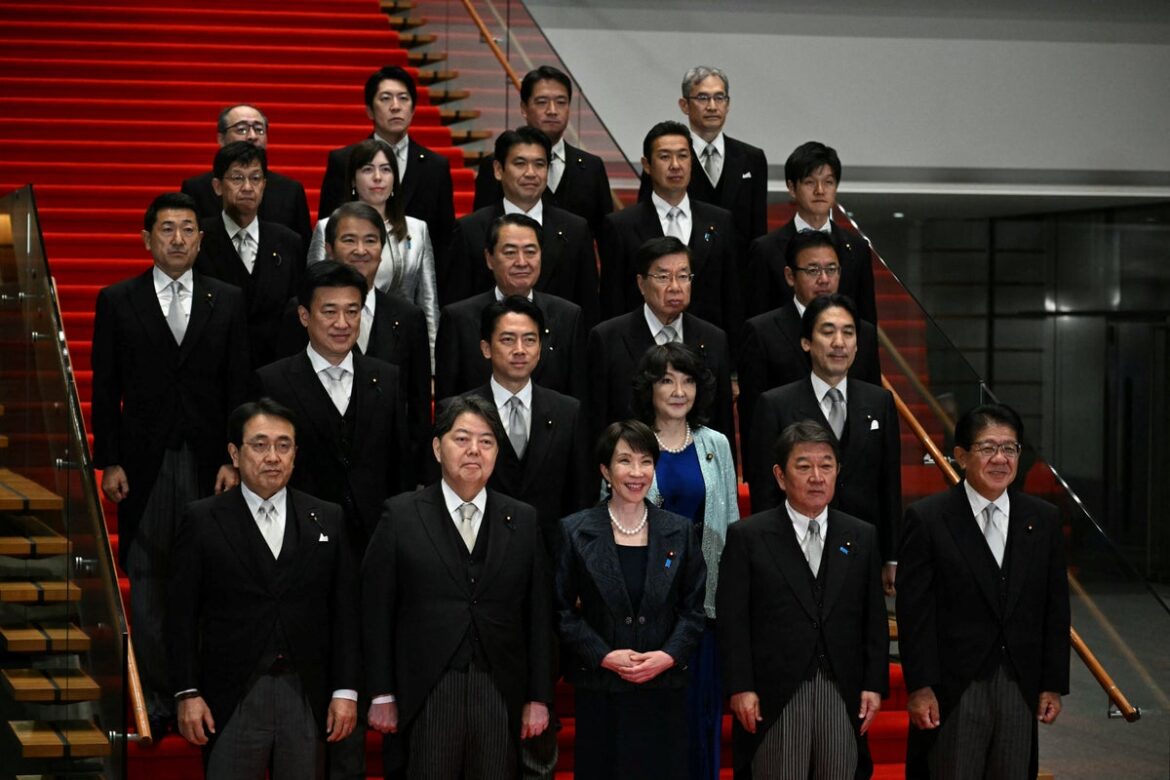Japan’s new prime minister Sanae Takaichi has appointed just two women to her 19-member cabinet, despite pledging to match the levels of female representation seen in Nordic countries.
Ms Takaichi, an ultra-conservative who on Tuesday became Japan’s first female prime minister, had promised to model her government’s gender balance on countries such as Iceland and Finland, where women make up roughly half of all cabinet members.
But the new lineup, announced just hours after her election, mirrors the male-dominated structure of past governments.
Satsuki Katayama was appointed finance minister, becoming the first woman ever to hold the role, while Kimi Onoda will serve as economic security minister.
During her campaign, Ms Takaichi promised to form a cabinet with women’s representation “not particularly lower than Nordic countries”.
“I wouldn’t appoint women just because they’re women,” she told a party rally last month. “But the plan is to pick far more women who are capable and willing to serve the nation.”
Six of Iceland’s 11 ministers and 11 of Finland’s 19 are women. By contrast, female representation in Japan’s lower house stands at just 15.7 per cent, with 73 women among 465 MPs – a record high for the country but still one of the lowest in the developed world.

Sanae Takaichi, leader of the ruling Liberal Democratic Party, walks after casting a vote in an election to choose Japan’s next prime minister at the Lower House of Parliament in Tokyo, Japan (via REUTERS)
Ms Takaichi’s appointment follows her party’s poor showing in July’s election, which forced the Liberal Democratic Party (LDP) to form a new right-wing coalition with the Osaka-based Japan Innovation Party.
Her rise marks a historic moment for Japanese politics but also underscores the persistence of deep gender disparities. According to the World Economic Forum’s 2025 Global Gender Gap Index, Japan ranks 118th of 148 countries, behind most of its peers in the G7.
Ms Takaichi, 64, has long been known for her hawkish and nationalist views. A protégé of former prime minister Shinzo Abe, she supports expanding Japan’s military role, maintaining the imperial family’s male-only line of succession, and opposes same-sex marriage and separate surnames for married couples — positions that align her with Japan’s conservative establishment.
Her approval rating currently stands at 64.4 per cent, according to a Kyodo News poll published on Wednesday – significantly higher than those of her predecessors, Shigeru Ishiba (50.7 per cent) and Fumio Kishida (55.7 per cent), when they first took office.
Ms Takaichi, who has cited Margaret Thatcher as a political role model, said she hoped to strengthen Japan’s economy and international standing while ensuring “political stability”. But as her government takes shape, many observers say it will take more than symbolism to shift the balance of power in one of the world’s most male-dominated parliaments.
While Ms Takaichi has spoken of improving women’s health and cited her own experience of menopause, critics say her leadership does not signal wider progress for gender equality.
“The prospect of a first female prime minister doesn’t make me happy,” sociologist Chizuko Ueno said on X, noting that her appointment might improve Japan’s global ranking but “doesn’t mean Japanese politics will become kinder to women”.
Others expressed cautious optimism. Naomi Koshi, Japan’s youngest-ever female mayor, told Kyodo News: “There is great significance in Takaichi becoming prime minister, with a broader impact on society.”


AloJapan.com